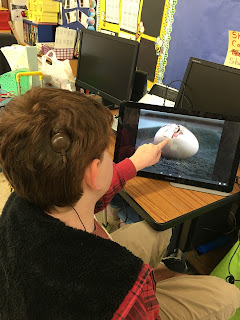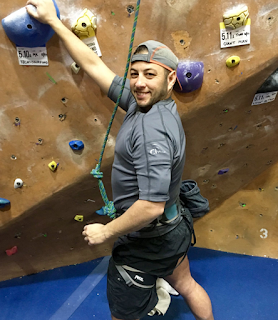By Eric Sherman
In its
2009–2010
Annual Survey of Deaf and Hard of Hearing Children and Youth, the Gallaudet
Research Institute estimates about 40 percent of children with hearing loss
exhibit another disability and notes the prevalence of Autism Spectrum Disorder
(ASD) to be 1 in 59.
[1] Early
intervention
is critical for the development of
speech, language, communication skills and learning. Some families are fortunate to discover their
child’s hearing loss at a young age, so an early intervention can be
implemented to help their child stay on track with their hearing peers. What happens when you put your child through
a cochlear implant surgery, spend years of AVT or speech therapy and it seems
your child is making very little progress?
This was the case with our son. Two years of AVT, after receiving a cochlear
implant, it was becoming increasingly frustrating to find our son was nowhere
near his hearing peers in communication and language skills. We knew language development could be a long
process, but something else was wrong. Our
AVT thought it best to seek additional medical evaluations to see if there was
something else prohibiting our son’s language development. After having evaluations done, our son was
diagnosed as being on the Autism Spectrum or having ASD. Having a child with hearing loss takes lot of
work and commitment by a family, add autism to the mix and it is like trying to
solve a puzzle without knowing what pieces are in play.

With intensive behavioral and
speech therapy over the years, our son has done well. He has become more verbal and can certainly
communicate his needs and wants. What is
difficult is unlocking the doors into his learning style. There is this blurred line between his
autism and hearing disability. When our
son has difficulty doing school work; we are always questioning whether he is
hearing the information, does he have a problem processing the information or
is he just not interested in the material because it has no real meaning to his
everyday life.
Our son has been lucky, over the
past 3 years, having a teacher who is very creative and skillful in teaching
and engaging her students in interesting ways.
Unfortunately, we have had DHH teachers, audiologists and other service
providers struggle to help our son because of their lack of knowledge, training
or willingness to learn more about ASD.
It’s clear from our experience,
our school district is in need of more information and training of how to
educate a child with a dual diagnosis of hearing loss and ASD. They seem to address the disabilities
individually as oppose to collectively, and how they may impact a child’s
overall education. We have a school
audiologist who wanted to create a goal for our son where he tells his aid or
teacher when his CI processors are not working.
This is a good goal and skill for a child with hearing loss. Add autism to the mix and the goal may become
very complex and difficult to achieve.
A child with ASD may have to be
taught what it means for their processor not to be working and then trained what
to do after they determine they are not working. Furthermore, generalization of whether the
processor is “working or not working,” “broken,” or “on or off” could be
confusing and difficult to understand. Our son would consider his processor being
“on” if his headpiece was attached to his head.
Also, a child with autism might like the silence and prefer not to
notify anyone their processors are off.
The dual diagnosis of hearing
loss and ASD has been documented for the past 20 years; however, research and
clinical guidelines on how to identify and teach young children with this dual diagnosis
are sparse.
[2] School
professionals and educators need more tools and training to better equip the
growing number of children afflicted with ASD and hearing loss. Both
Advance
Bionics and
Illinois
State University have done work in this area addressing this issue and calling
attention to the need for better diagnostic tools, early intervention and
training of education professionals.
Significantly more needs to be
done!
More about Ci Wear
Ci
Wear is a patented specialty shirt designed to secure cochlear implant
processors or other mobile/hearing devices, adding a layer of protection to
prevent wires from being snagged or entangled.
Shirts are manufactured in the USA and are available in youth and adult
sizes.
www.ciwear.com.
References:
- When It’s
More Than Hearing Loss
- Autism
and Hearing Loss: What You Need to Know to Help Your Families


